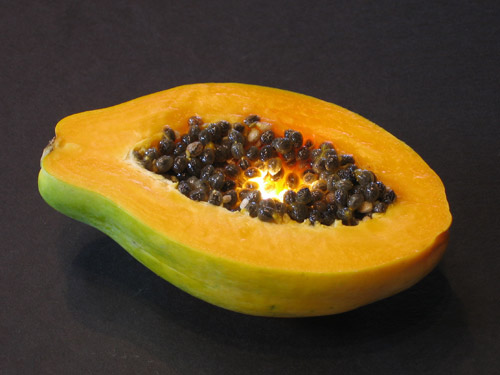Independent Health Risk Studies
By Elisha Goodman
“Claims regarding the safety of GE crops are based almost exclusively on assessments by government regulators, which in turn are founded mostly on unpublished studies conducted by the crop developer . . . contrary to popular belief, the FDA has not formally approved a single GE crop as safe for human consumption.1“ -Bill Freese, Research Analyst, Friends of the Earth, 2006
It is difficult to find independent funding to conduct unbiased health studies of genetically engineered (GE) crops. Studies conducted or funded by GE crop developers may be skewed to their advantage and troubling results may be withheld from summary data shown to regulators and the public. This was the case with Monsanto’s insecticide-producing GE corn, called MON863.2 Summary data from a 90-day rat feeding study revealed to European regulators raised concerns, prompting requests for release of the full study, which had been conducted by Monsanto. The company refused to comply, acceding only a year later upon order of a German court. The full study revealed that rats fed MON863 had lower kidney weights and elevated white blood cell counts compared to rats fed conventional corn. Independent reviewers who called for further studies to establish whether the corn posed human health risks were ignored.
The list below contains just a few of the independent studies beginning to emerge and their results indicate that we should have grave concern about the health effects of GMOs.
Genes from GMOs Transfer to Bacteria in Humans
Genes engineered into one organism have transferred to bacteria in the mouth3 and gut of humans.4 In the only human feeding study ever conducted to test GMOs, the Roundup Ready® gene from soy transferred to the bacteria found in the gut of humans. The fact that the bacteria took up the Roundup Ready® trait is an example of horizontal gene transfer, a phenomenon long discounted by the biotech industry. Most worrying, these studies show the potential for bacteria to also take up antibiotic resistant genes often engineered into GMOs. Bacteria could then become resistant to the antibiotics we use to combat diseases and fail to be cured by antibiotics.
Mice Fed GM Peas Show Immune Response
Mice that were fed GE peas engineered with a gene from a bean demonstrated an immune response, including inflammation of the lungs and increased serum antibody levels.5 Significantly, the protein produced from the natural version of the same gene in beans does not cause these responses. The study shows that heedlessly transferring genes from one organism to another via genetic engineering can have health consequences, including allergies and other adverse immune responses.
Allergic Reaction Caused By Gene Engineered into Soy
A gene from the Brazil nut inserted into soybeans made the soy allergenic to those who normally react to Brazil nuts.6
GM Soy Contains Proteins Identical to Shrimp and Dust Mite Allergens
Unlike regular soy, the GM soy consumed in the U.S. contains protein sections that are identical to those found in shrimp and dust mite allergens.7 This GM soy is the most widely grown GM crop, and in the form of soy formula is often fed to infants, yet there were never follow-up studies done to determine whether the soy is in fact allergenic.
Rats Fed GM Potatoes Have Pre-cancerous Cell Growth and Gastric Problems
A UK government-funded study demonstrated that rats fed GM potatoes developed potentially pre-cancerous cell growth and gastric problems.8
GM Corn-Fed Rats Have Problems with Blood Cell, Kidney and Liver Formation
Rats fed Monsanto’s GM corn, MON 863, had problems with blood cell, kidney and liver formation.9 Male rats had increased white blood cells and female rats had lower levels of red blood cells. Livers and kidneys had lesions and malformations.
No Minimum Level of GMO StarLink Corn Judged Safe for Human Consumption
After StarLink contaminated the food supply, expert scientific advisors to the EPA stated that there was no minimal level of StarLink’s Cry9C insecticidal protein that could be judged safe for human consumption.10 An extensive literature review reveals numerous unpublished studies that indicate the insecticidal proteins engineered into Bt corn may be allergenic.11
GM Produced Tryptophan Associated With At Least 37 Deaths and 1500 Serious Illnesses
A batch of tryptophan produced by GM microorganisms was associated with at least 37 deaths and 1500 disabilities from a rare disease known as eosinophilia-myalgia syndrome.12
Unpredictable Biotech Techniques Could Lead to Toxic Carcinogenic Products
According to Salk Institute cell biologist David Schubert, the crude and unpredictable nature of genetic engineering techniques could lead to “the biosynthesis of molecules that are toxic, allergenic or carcinogenic . . . GM food is not a safe option, given our current lack of understanding of the consequences of recombinant technology.”13
Elisha Goodman lives in Hilo, Hawai‘i. She has lived and worked on organic farms in Hawai‘i and abroad and is the director of Hawai‘i SEED. She is a founding member of Hawai‘i Genetic Engineering Action Network and sits on the Board of Directors of Hawai‘i Organic Farmers Association.
- William Freese and David Schubert, “Safety Testing and Regulation of Genetically Engineered Foods,” Biotechnology and Genetic Engineering Reviews, Vol. 21, 299-324 November 2004.
- “French experts very disturbed by health effects of Monsanto GM corn,” (24/4/2004), http://www.gmwatch.org/archive2.asp?arcid=3308, Translation of Le Monde article “L’expertise confidentielle sur un inquiétant maïs transgénique,” Confidential report on a worrying GM corn. Also see Spilling the Beans, June 2005.
- Mercer, D.K., Scott, K.P., Bruce-Johnson, W.A. Glover, L.A. and Flint, H.J. (1999). Fate of free DNA and transformation of the oral bacterium Streptococcus gordonii DL1 by plasmid DNA in human saliva. Applied and Environmental Microbiology 65, 6-10.
- Netherwood, et al, “Assessing the survival of transgenic plant DNA in the human gastrointestinal tract,” Nature Biotechnology, Vol 22 Number 2 February 2004. http://www.food.gov.uk/multimedia/pdfs/gmnewcastlereport.PDF.
- Vanessa E. Prescott, Peter M. Campbell, Andrew Moore, Joerg Mattes, Marc E. Rothenberg, Paul S. Foster, T. J. V. Higgins, and Simon P. Hogan, “Transgenic Expression of Bean-Amylase Inhibitor in Peas Results in Altered Structure and Immunogenicity,” Agric. Food Chem., 53 (23), 9023 -9030, 2005. 10.1021/jf050594v S0021-8561(05)00594-7, October 15, 2005:Mice exposed to alpha-amylase inhibitor of GM-peas showed evidence of an immune response after two weeks, with the response increasing at four weeks. The reaction in mice was evident by inflammation in the lungs and increased serum antibody levels. The research also showed that after eating the GM peas, there was evidence that the pea alpha-amylase inhibitor protein primed the mice to react to other food antigens.
- J. Ordlee, et al, “Identification of a Brazil-Nut Allergen in Transgenic Soybeans,” The New England Journal of Medicine, March 14, 1996.
- G. A. Kleter and A. A. C. M. Peijnenburg, “Screening of transgenic proteins expressed in transgenic food crops for the presence of short amino acid sequences identical to potential, IgE-binding linear epitopes of allergens,” BMC Structural Biology, vol. 2, 2002, p. 8-19.
- Ewen, S.W.B., Pusztai, A., 1999b. “Effects of diets containing genetically modified potatoes expressing Galanthus nivalis lectin on rat small intestine,” Lancet 354, 1353-1354:This study showed that feeding GM potatoes expressing a lectin gene from the snowdrop plant to rats led to major changes in gut structure and function, including thickening of the stomach mucosa and proliferative hyperplastic growth of the rat small intestine leading to crypt enlargement. The genetic modification process appeared to be fully responsible for the latter effect and partially responsible for the stomach mucosal thickening, showing the need to test all new GM products for undesirable gastric changes, which at present is normally not done.
- Joan K. Lemen et. al, Monsanto Company Toxicology Report MSL 18175, “CV-2000-260: 13-Week dietary Subchronic Comparison Study with MON 863 Corn in Rats Preceded by a 1-Week Baseline Food Consumption Determination with PMI Certified Rodent Diet #5002,” 15 December 2002.
- “Assessment of Additional Scientific Information Concerning StarLink Corn,” FIFrA Scientific Advisory Panel to the EPA, SAP Report No. 2001-09, from meeting on July 17/18, 2001.
- William Freese and David Schubert, “Safety Testing and Regulation of Genetically Engineered Foods,” Biotechnology and Genetic Engineering Reviews, Vol. 21, 299-324 November 2004.
- Mayeno, A.N. and Gleich, G.J. (1994) “Eosinophilia-myalgia syndrome and tryptophan production: a cautionary tale.” Tibtech 12, 346-352.
- Schubert, D. (2002). “A different perspective on GM food,” Nature Biotechnology, Vol. 20, p.969. (From California Certified Organic Farmers Association’s report “What is Genetic Engineering?” http://www.ccof.org/ge_mr.php)

